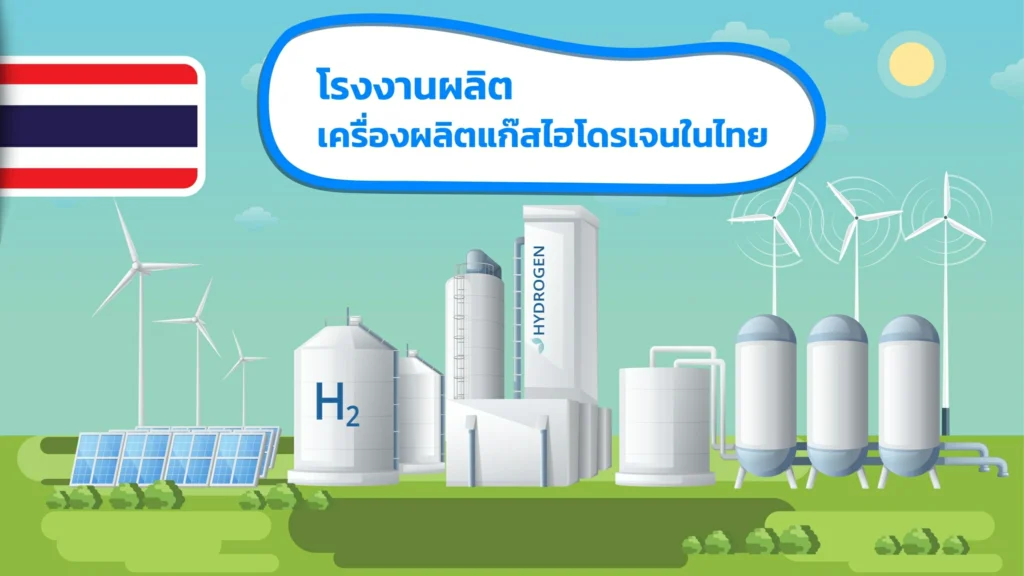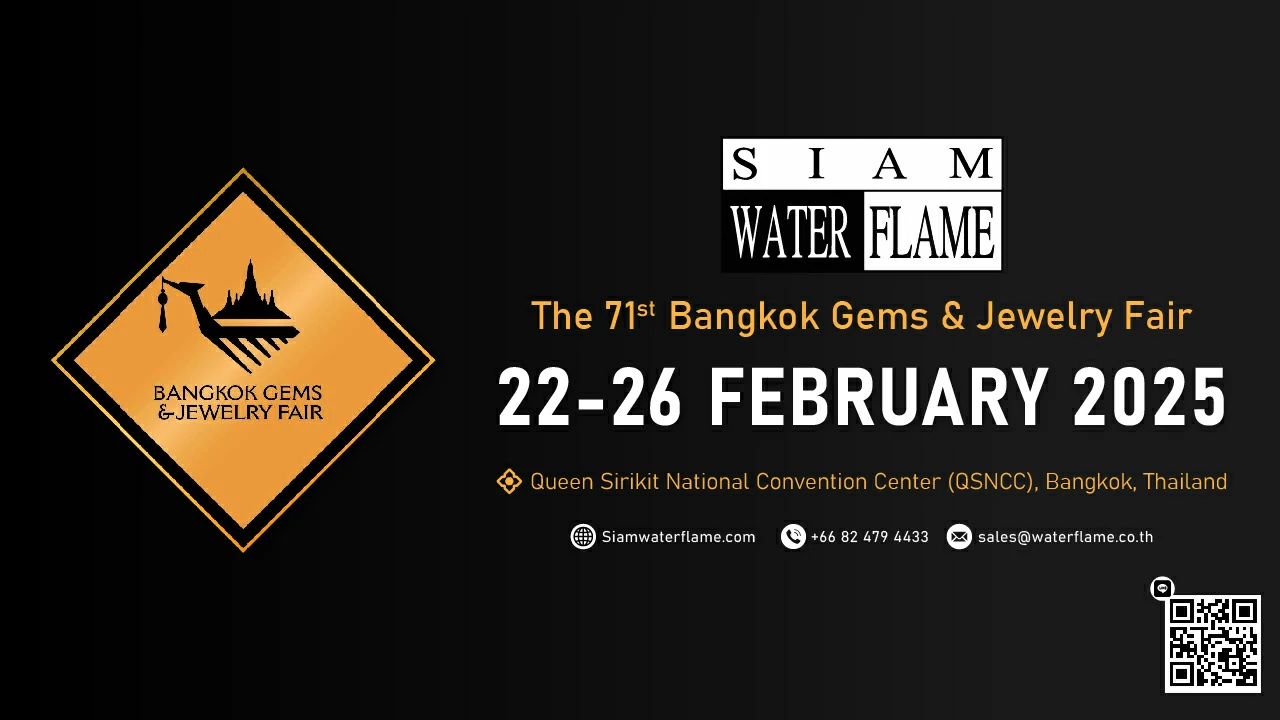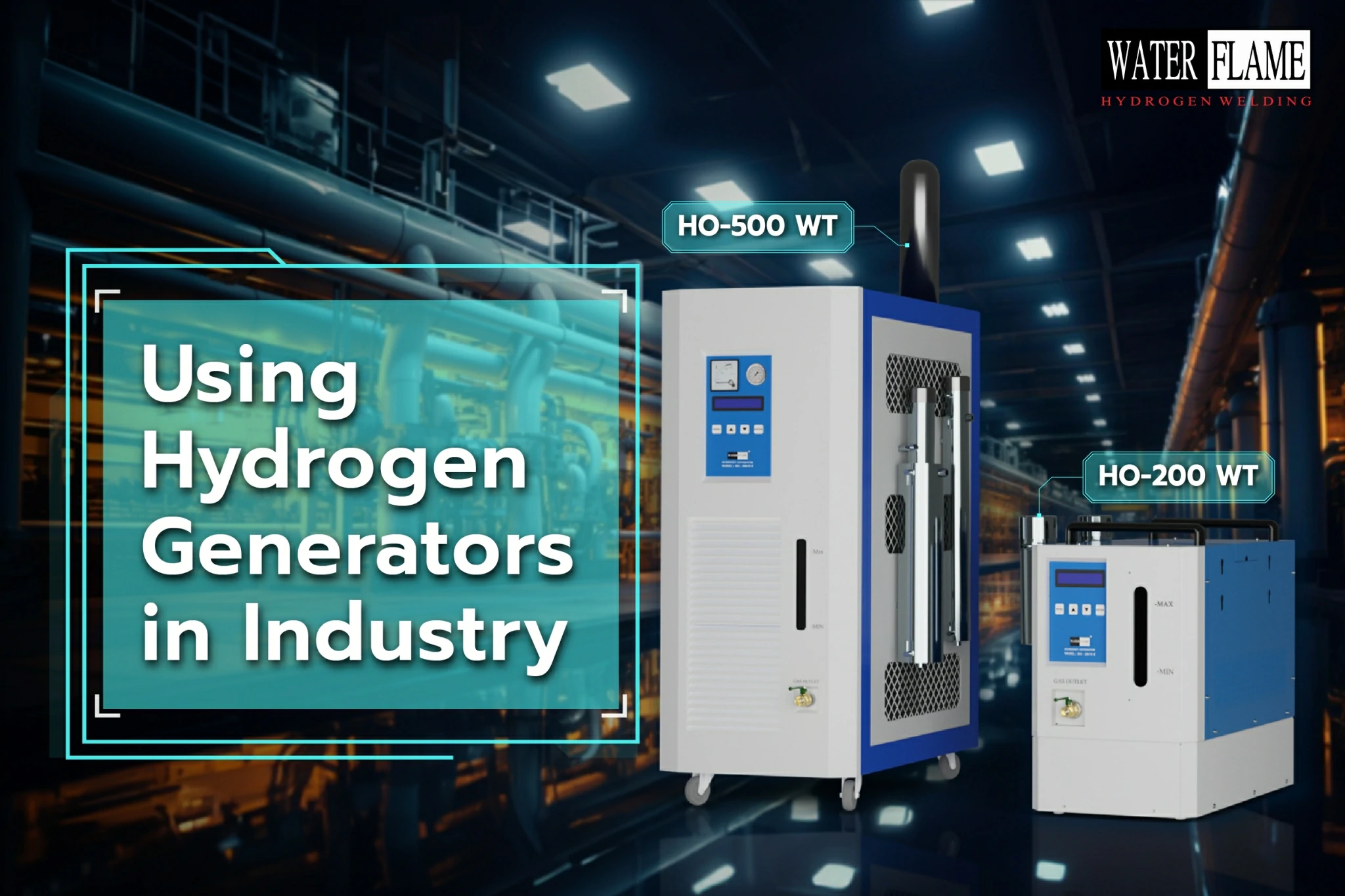Hydrogen gas generator factory in Thailand
Hydrogen production model
The hydrogen that can be used can be produced from hydrogen sources by various processes as follows.
Thermal decomposition (Thermolysis)
Hydrogen production is by using water as the raw material and using high heat to decompose water into hydrogen ions (H+), oxygen ions (O2-), hydrogen gas (H2), oxygen gas (O2), hydroxide ions. (OH-), hydrogen peroxide (H2O2) and hydroperoxyl But decomposition is low even at very high temperatures. In addition, in industrial or commercial applications of this process, equipment or materials used in the manufacturing process must be able to withstand high temperature operation.
Photocatalytic process (Photocatalytic Process)
It is the process of producing hydrogen gas. using semiconductors as photocatalysts Which receive photons (photon) from sunlight to excite electrons (electrons) causing water to split into hydrogen and oxygen gas. Then it goes through a hydrogen purification process. The most commonly used photocatalysts are: Titanium Dioxide (Titanium Dioxide, TiO2), Tungsten (III) Oxide, WO3) and Platinum (Platinum, Pt), etc. The efficiency of the process depends on the crystal structure, aggregate properties. and the surface area of the catalyst The limitation of this process is that the catalyst used must be resistant to corrosion in water.
Steam Methane Reforming
It is the production of hydrogen gas from natural gas by using a catalyst that is commonly used, nickel, and the temperature used is in the range of 500-1,000 degrees Celsius. The product is mainly composed of hydrogen gas and carbon monoxide. And get carbon dioxide, water and methane gas as co-products, this method does not help to reduce the carbon footprint. Without the use of carbon storage and adsorption technologies
Steam-Iron Process
It is a hydrogen gas production process that can produce high-purity hydrogen gas through the reduction-oxidation reaction of iron oxide. or magnetite The result is that in addition to hydrogen gas, there is also carbon dioxide.

Electrolysis of water (Electrolysis)
It is the process of delivering direct current to the electrodes of an electrochemical cell. for oxidation and reduction reactions causing the water molecules to be separated into oxygen gas and oxygen gas The electrolysis of water requires higher volts than 1.229 volts. The advantage of hydrogen gas production from this method is its high purity. and no carbon dioxide emissions The downside is the high cost of electricity.
Biohydrogen Production
It is the production of high-purity hydrogen gas by biological processes through microbial organisms. Most of them will use water. organic waste or biomass as the main substrate It may require enzymes or protein compounds to help catalyze the reaction. Bio-hydrogen production can be classified into light- and non-light-based types.
Hydrogen production by fermentation (Fermentation Hydrogen Production)
It is the production of hydrogen using biochemical processes. By causing organic matter to decompose and chemically change by enzymes produced by microorganisms It can be classified into several types, namely photosensitive fermentation and photoactive fermentation. Photosensitive fermentation is observed in anaerobic bacteria.
Photosynthesis (Photosynthesis)
It’s the process of producing hydrogen that’s most common in algae. It uses sunlight to stimulate water molecules to split into hydrogen ions, oxygen gas and electrons. The main limitation of hydrogen production through photosynthesis in industrial applications is is a high cost of production
.Membrane Separation
It is a process for separating mixed gases with synthetic membranes, such as separating hydrogen from mixed gases containing nitrogen and methane. Hydrogen separation from oil refining process and separating methane from biogas, etc. Normally, membrane gas separation uses a non-porous polymer membrane. By separating each gas from each other, it relies on the different solubility and diffusion properties of each gas.
Hydrogen Generator (Siam Water Flame)
How does a hydrogen generator work ?
Electrolysis of water is electrolysis. which is the process of splitting water atoms The water atom is made up of two parts hydrogen and one part oxygen. Separation is done by passing a direct current into the water through the positive and negative terminals. Water must contain electrolytes. (electrolyte) containing ions such as salts or acids The result will be oxygen and hydrogen gases.
Hydrogen production company in Thailand ( siamwaterflame )
Using electrolysis method (Electrolysis)
It is the process of delivering direct current to the electrodes of an electrochemical cell. for oxidation and reduction reactions causing the water molecules to be separated into oxygen gas and oxygen gas The electrolysis of water requires higher volts than 1.229 volts. The advantage of hydrogen gas production from this method is its high purity. and no carbon dioxide emissions The downside is the high cost of electricity.

เครื่องผลิตแก๊สไฮโดรเจน ในเมืองไทย
บริษัท siam water flame เป็นผู้ผลิตที่เชียวชาญมาเป็นระยะเวลามากว่า 20ปี บริษัทฯได้ปรับปรุงและพัฒนาสินค้าตลอดเวลาเพื่อตอบสนองความต้องการของลูกค้าและก้าวไปข้างหน้าด้วยเทคโนโลยีที่ทันสมัย
Hydrogen gas generator factory in Thailand
Hydrogen production model
The hydrogen that can be used can be produced from hydrogen sources by various processes as follows.
Thermal decomposition (Thermolysis)
Hydrogen production is by using water as the raw material and using high heat to decompose water into hydrogen ions (H+), oxygen ions (O2-), hydrogen gas (H2), oxygen gas (O2), hydroxide ions. (OH-), hydrogen peroxide (H2O2) and hydroperoxyl But decomposition is low even at very high temperatures. In addition, in industrial or commercial applications of this process, equipment or materials used in the manufacturing process must be able to withstand high temperature operation.
Photocatalytic process (Photocatalytic Process)
It is the process of producing hydrogen gas. using semiconductors as photocatalysts Which receive photons (photon) from sunlight to excite electrons (electrons) causing water to split into hydrogen and oxygen gas. Then it goes through a hydrogen purification process. The most commonly used photocatalysts are: Titanium Dioxide (Titanium Dioxide, TiO2), Tungsten (III) Oxide, WO3) and Platinum (Platinum, Pt), etc. The efficiency of the process depends on the crystal structure, aggregate properties. and the surface area of the catalyst The limitation of this process is that the catalyst used must be resistant to corrosion in water.
Steam Methane Reforming
It is the production of hydrogen gas from natural gas by using a catalyst that is commonly used, nickel, and the temperature used is in the range of 500-1,000 degrees Celsius. The product is mainly composed of hydrogen gas and carbon monoxide. And get carbon dioxide, water and methane gas as co-products, this method does not help to reduce the carbon footprint. Without the use of carbon storage and adsorption technologies
Steam-Iron Process
It is a hydrogen gas production process that can produce high-purity hydrogen gas through the reduction-oxidation reaction of iron oxide. or magnetite The result is that in addition to hydrogen gas, there is also carbon dioxide.

Electrolysis of water (Electrolysis)
It is the process of delivering direct current to the electrodes of an electrochemical cell. for oxidation and reduction reactions causing the water molecules to be separated into oxygen gas and oxygen gas The electrolysis of water requires higher volts than 1.229 volts. The advantage of hydrogen gas production from this method is its high purity. and no carbon dioxide emissions The downside is the high cost of electricity.
Biohydrogen Production
It is the production of high-purity hydrogen gas by biological processes through microbial organisms. Most of them will use water. organic waste or biomass as the main substrate It may require enzymes or protein compounds to help catalyze the reaction. Bio-hydrogen production can be classified into light- and non-light-based types.
.Hydrogen production by fermentation (Fermentation Hydrogen Production)
It is the production of hydrogen using biochemical processes. By causing organic matter to decompose and chemically change by enzymes produced by microorganisms It can be classified into several types, namely photosensitive fermentation and photoactive fermentation. Photosensitive fermentation is observed in anaerobic bacteria.
Photosynthesis (Photosynthesis)
It’s the process of producing hydrogen that’s most common in algae. It uses sunlight to stimulate water molecules to split into hydrogen ions, oxygen gas and electrons. The main limitation of hydrogen production through photosynthesis in industrial applications is is a high cost of production
Membrane Separation
It is a process for separating mixed gases with synthetic membranes, such as separating hydrogen from mixed gases containing nitrogen and methane. Hydrogen separation from oil refining process and separating methane from biogas, etc. Normally, membrane gas separation uses a non-porous polymer membrane. By separating each gas from each other, it relies on the different solubility and diffusion properties of each gas.
Hydrogen Generator ( Siam Water Flame)
How does a hydrogen generator work ?
Electrolysis of water is electrolysis. which is the process of splitting water atoms The water atom is made up of two parts hydrogen and one part oxygen. Separation is done by passing a direct current into the water through the positive and negative terminals. Water must contain electrolytes. (electrolyte) containing ions such as salts or acids The result will be oxygen and hydrogen gases.
Hydrogen production company in Thailand ( siamwaterflame )
using electrolysis method (Electrolysis)
It is the process of delivering direct current to the electrodes of an electrochemical cell. for oxidation and reduction reactions causing the water molecules to be separated into oxygen gas and oxygen gas The electrolysis of water requires higher volts than 1.229 volts. The advantage of hydrogen gas production from this method is its high purity. and no carbon dioxide emissions The downside is the high cost of electricity.
เครื่องผลิตแก๊สไฮโดรเจน ในเมืองไทย
บริษัท siam water flame เป็นผู้ผลิตที่เชียวชาญมาเป็นระยะเวลามากว่า 20ปี บริษัทฯได้ปรับปรุงและพัฒนาสินค้าตลอดเวลาเพื่อตอบสนองความต้องการของลูกค้าและก้าวไปข้างหน้าด้วยเทคโนโลยีที่ทันสมัย
Hydrogen gas generator factory in Thailand
Hydrogen production model
The hydrogen that can be used can be produced from hydrogen sources by various processes as follows.
Thermal decomposition (Thermolysis)
Hydrogen production is by using water as the raw material and using high heat to decompose water into hydrogen ions (H+), oxygen ions (O2-), hydrogen gas (H2), oxygen gas (O2), hydroxide ions. (OH-), hydrogen peroxide (H2O2) and hydroperoxyl But decomposition is low even at very high temperatures. In addition, in industrial or commercial applications of this process, equipment or materials used in the manufacturing process must be able to withstand high temperature operation.
Photocatalytic process (Photocatalytic Process)
It is the process of producing hydrogen gas. using semiconductors as photocatalysts Which receive photons (photon) from sunlight to excite electrons (electrons) causing water to split into hydrogen and oxygen gas. Then it goes through a hydrogen purification process. The most commonly used photocatalysts are: Titanium Dioxide (Titanium Dioxide, TiO2), Tungsten (III) Oxide, WO3) and Platinum (Platinum, Pt), etc. The efficiency of the process depends on the crystal structure, aggregate properties. and the surface area of the catalyst The limitation of this process is that the catalyst used must be resistant to corrosion in water.
Steam Methane Reforming
It is the production of hydrogen gas from natural gas by using a catalyst that is commonly used, nickel, and the temperature used is in the range of 500-1,000 degrees Celsius. The product is mainly composed of hydrogen gas and carbon monoxide. And get carbon dioxide, water and methane gas as co-products, this method does not help to reduce the carbon footprint. Without the use of carbon storage and adsorption technologies
Steam-Iron Process
It is a hydrogen gas production process that can produce high-purity hydrogen gas through the reduction-oxidation reaction of iron oxide. or magnetite The result is that in addition to hydrogen gas, there is also carbon dioxide.
Electrolysis of water (Electrolysis)
It is the process of delivering direct current to the electrodes of an electrochemical cell. for oxidation and reduction reactions causing the water molecules to be separated into oxygen gas and oxygen gas The electrolysis of water requires higher volts than 1.229 volts. The advantage of hydrogen gas production from this method is its high purity. and no carbon dioxide emissions The downside is the high cost of electricity.
Biohydrogen Production
It is the production of high-purity hydrogen gas by biological processes through microbial organisms. Most of them will use water. organic waste or biomass as the main substrate It may require enzymes or protein compounds to help catalyze the reaction. Bio-hydrogen production can be classified into light- and non-light-based types.
Hydrogen production by fermentation (Fermentation Hydrogen Production)
It is the production of hydrogen using biochemical processes. By causing organic matter to decompose and chemically change by enzymes produced by microorganisms It can be classified into several types, namely photosensitive fermentation and photoactive fermentation. Photosensitive fermentation is observed in anaerobic bacteria.
Photosynthesis (Photosynthesis)
It’s the process of producing hydrogen that’s most common in algae. It uses sunlight to stimulate water molecules to split into hydrogen ions, oxygen gas and electrons. The main limitation of hydrogen production through photosynthesis in industrial applications is is a high cost of production
Membrane Separation
It is a process for separating mixed gases with synthetic membranes, such as separating hydrogen from mixed gases containing nitrogen and methane. Hydrogen separation from oil refining process and separating methane from biogas, etc. Normally, membrane gas separation uses a non-porous polymer membrane. By separating each gas from each other, it relies on the different solubility and diffusion properties of each gas.
Hydrogen Generator (Siam Water Flame)
How does a hydrogen generator work?
Electrolysis of water is electrolysis. which is the process of splitting water atoms The water atom is made up of two parts hydrogen and one part oxygen. Separation is done by passing a direct current into the water through the positive and negative terminals. Water must contain electrolytes. (electrolyte) containing ions such as salts or acids The result will be oxygen and hydrogen gases.
Hydrogen production company in Thailand ( siamwaterflame )
using electrolysis method (Electrolysis)
It is the process of delivering direct current to the electrodes of an electrochemical cell. for oxidation and reduction reactions causing the water molecules to be separated into oxygen gas and oxygen gas The electrolysis of water requires higher volts than 1.229 volts. The advantage of hydrogen gas production from this method is its high purity. and no carbon dioxide emissions The downside is the high cost of electricity.
เครื่องผลิตแก๊สไฮโดรเจน ในเมืองไทย
บริษัท siam water flame เป็นผู้ผลิตที่เชียวชาญมาเป็นระยะเวลามากว่า 20ปี บริษัทฯได้ปรับปรุงและพัฒนาสินค้าตลอดเวลาเพื่อตอบสนองความต้องการของลูกค้าและก้าวไปข้างหน้าด้วยเทคโนโลยีที่ทันสมัย

PRODUCTS : HYDROGEN
FACEBOOK : HYDROGEN GAS GENERATOR














